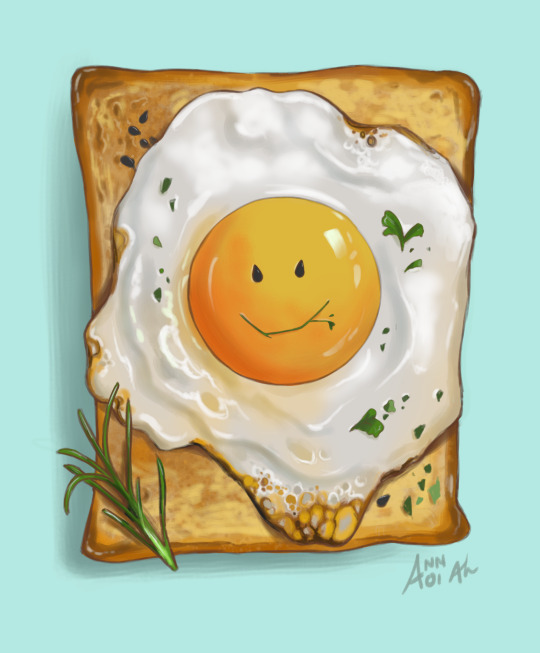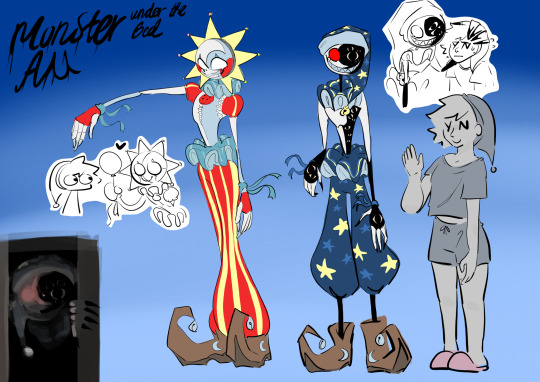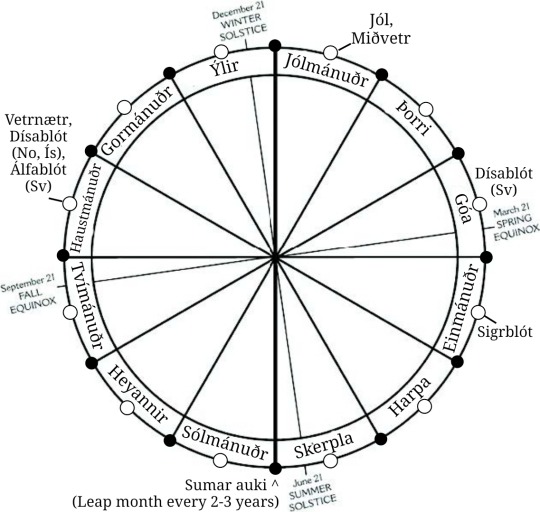#Sidr
Explore tagged Tumblr posts
Text
youtube
Vígundr - Loki
#music tag#vigundr#loki#Vígundr#Siðr#Sidr#pagan#pagan folk#folk#heathen#norse mythology#norse gods#norse#someone please become as obsessed with her as I am#I am very *normal* about her music#Youtube
29 notes
·
View notes
Text
Sidr Honey - Know Its Benefits and Types

We all know that honey offers enormous benefits, but some specific kinds of benefits are attributed to the Yemeni Sidr Honey. It is one of the best honey in the world and falls under rare types of raw honey.
The flavor of Yemeni Sidr honey, just as its shade & thickness, can change according to the region from which it comes. It is thick honey with a rich, extravagant, and sweet taste. It has a brilliant golden tone, which turns darker with time.
Let's further list out the benefits of the Yemeni Sidr Honey: -
1. Organic
The Sidr trees are planted and grown in the barren areas of Yemen in wild and coarse conditions. Geohoney brings you the most organic honey directly producing nectar from Yemen Sidr plants.
2. Raw & Pure
It has been a proven fact that Yemeni beekeepers are usually inclined to the traditional honey harnessing processes and beekeeping methods. Hence, they eliminate the entire usage of chemicals in their products from beginning to end and throughout the process.
3. Natural Medicine
Sidr Honey has an ample amount of benefits of its own. Major ones are a cure for infections, diseases, stomach pains, cancer, liver problems, digestive problems, constipation, wounds, skincare, and eye diseases, and it also strengthens the immune system.
4. Sidr Honey for Sexuality
Honey has been considered an aphrodisiac ingredient for ages and is associated with romance. The beneficial compounds and elements present in honey help in improving fertility and enhance the sexual ability of men and women. In addition, being rich in minerals like phosphorus, calcium, iron, magnesium, etc., and antioxidants, honey contributes a lot to improving general health.
Types of Sidr Honey: -
Sidr Doany Honey
Sidr Osaimi Honey
Sidr Kashmir Honey
Apart from the all above benefits, Yemeni Sidr honey is additionally incredible for fighting off the physical, aesthetic, and mental impacts of aging. As a result, old people can include limited quantities of this honey in them eating regimens to ease joint pain, reinforce their brain health, secure their hearts, and maintain body mobility.
Honey has a reinforcing impact on most body parts and is termed a natural cure for all types of health problems. Buy the best Sidr honey and include it in the daily meal plan to experience the real difference in the body like never before.
Go to Geohoney and Buy Now!
0 notes
Text
I’m getting gender affirming surgery today! Prayers for a safe operation and an easy recovery are welcome!
#queer heathenry#norse heathenry#norse paganism#heathenry#forn sidr#norse heathen#transgender#gender affirming surgery
167 notes
·
View notes
Text
saw someone point out that bbc merlin never had a ball episode and i have been viscerally ANGRY ever since. it would have been the best thing EVER. if it took place in the earlier seasons, we would have morgana in a stunning gown and gwen and merlin watching her and arthur from the sidelines, never able to join in with the ones they love. BUT if it was in the later seasons, we would have gotten gwen in a gorgeous gown and her dancing with arthur as merlin watches, alone this time and envious because he can never be as lucky as her.
#merlin#bbc merlin#arthur pendragon#gwen pendragon#morgana pendragon#lol three of them have the same surname and merlins just waiting patiently for arthur to sign the wedding papers#this became a morgwen/merthur thing instead of a rant but im not complaining#we could have had it all 😭😭😭#like imagine if we go BOTH#the parallels of gwen and merlin watching from the sidr and then merlin on his own#like dont get me wrong im convinced hed still be dancing and having fun but the ANGST#also imagine if it happened when one of the princesses came for a betrothal with arthur and we got argwen angst#uggghhhhhh im UNWELL
96 notes
·
View notes
Text
Personally, while I think Rindou takes being in love the worst,I think ran takes a breakup the hardest. He convinces himself that you'll come back to him anyway, because you need him, and things were good up until now. It doesn't really occur to him to do any apologising because he believes you'll come back regardless once you've seen how shitty it is out there. So in the beginning he takes it pretty well.. engrosses himself in work, sleeps when he's no working and generally doesn't feel like he's losing out on much until it's about a week later of no contact and he misses your presence. There's still evidence of you being there on him. A hairbrush that has your hair in it still and a few of your clothes and he gets this weird and new ache in his chest. He pretends to offhandedly asks Rindou where you're at or whether he's seen you and rindou says he saw you with some good looking guy at a restaurant in a nice dress and looking made up. And ran's heart just sinks. He's too proud to be the first to break the no contact or to apologise but rindou's words hit him pretty deep and he's pacing biting his nails and curled up in bed wondering what he should do because, without any poetry to it- he just missed you. He's so solitary sometimes that rindou knocks his door to find him in bed with the blanket around his face looking forlorn at a picture of you. Maybe he will have to be the one to apologise first this time. And he makes Rindou click send on the message because he's freaking out about it inside.
#sorry if there are spelling mistakes I've got an awful awful headache#my whole Right sidr of my face hurts#tokyo revengers#tokyo rev#haitani ran#ran x reader
49 notes
·
View notes
Text

#egg#digital art#food#artists on tumblr#food art#sunny side up#sunny sidr up egg#toast#just wanted to try that prompt from a discord server im in#and it says 'draw an egg'#ended up deciding yo add toast and a smiley#it made me hungry at 10 pm#art#artists#artflow#digital painting#smiley
79 notes
·
View notes
Text

Eee I was goofing around and came up with a lil AU idea. It’s very underdeveloped cuz I just started it tonight but ye :3
The idea is that Y/N is just being annoyed by these two dumb creatures that live in their closet <3
Short summary:
When Y/N was a little kid, they used to be a huge scaredy cat, they were scared of everything; spiders, heights, clowns, the dark, etc.
They’d always be crying over something, whether that be the scary noise from the hallway, or the spooky shadow in their room, or the supposed monster under their bed. But this wasn’t anything unique. In fact, most kids feared the monsters in the dark, only to grow up and learn that theres no such thing.
It’s been years since Y/N worried about such things. Although, now that they’re living on their own, they’ve started growing paranoid once again. They started fearing the unknown, the creaks, the thumps, the scratches, the eyes at the end of their bed… only this time, they were real.
—————————————————
Also to anyone wondering, I made Sun clown themed because Y/N is afraid of clowns, and moon represents their fear of the dark
Lemme know what y’all think and if you’d be interested in more! :D
#tw scopophobia#coulrophobia#tw ommetaphobia#PLS TELL ME THIS HASN’T BEEN DONE ALREADY#Also this is my first ever dca au#whoop whoop#sidr note: i kinda hate the drawing on the bottom left#it was rlly rushed pls ignore it lol#dca fandom#dca fanart#daycare attendant#sundrop#moondrop#fnaf#security breach#sun and moon#ommetaphobia#tw coulrophobia#cw horror#tw horror#dca au#tw trypophobia#tw eyes#monster under the bed au#my art
406 notes
·
View notes
Text








“The Glittering North”
Raby Castle, Northern England
Celebrating the region’s Norse and Viking heritage in a raucous adventure like no other, the event brings to life iconic figures from the past with enchanting puppetry and illuminating light art.
29 notes
·
View notes
Note
Do you think animism can sometimes get too close to anthropomorphizing other creatures
Not if you understand the word in the correct sense.
Most definitions of Animism you'll find online go something like this: "Animism is the belief that everything has a soul or vital essence to it."
This is often extrapolated to mean: "Animism is the belief that everything has human-like sentience."
But this is all based on how "animism" and "souls" are understood from a Christian point of view, and what Animism looks like from a Christian perspective is not going to give you much insight into how it functions.
A more accurate definition of Animism goes something like this:
Animism is any paradigm that acknowledges the interconnected nature of all things, and that all things were, are, and will continue to be defined in relation to each other. Everything both seen and unseen is part of the same ecosystem.
The "everything has a soul" bit is a rough interpretation of how Animistic paradigms don't view "the spiritual" and "the mundane" as separate things, but rather as phenomena occurring within the same ecosystem…including sub-ecosystems like individual living beings. Any lines drawn between "the spiritual" and "the mundane" are purely interpretive, because like anything in any ecosystem, removing one collapses the whole.
Whether or not this begets "everything having a soul" sort of just depends on how you want to draw those lines, and how you define the concept of "soul" or "vital essence."
Now, with that all said, let's talk about anthropomorphism.
(Note that I only speak about this within the context of Norse Heathen Animism, and that the following doesn't represent all Animistic paradigms.)
Anthropomorphism is a kind of personification, and personification in Norse Heathenry serves an allegorical function: It helps us portray what a spirit is like to a general audience.
Experiencing spirits is weird, at least for me, because the experience is built on a confluence of things: The spirit's astral appearance and how my mind interprets it, their material manifestation if they have one (it's usually commonplace, like an object or phenomenon), their apparent sentience, their accompanying vibes, information received via mental downloads, and any other "reading" I may get through various channels of perception. All these things work together to create the experience of the spirit. If that experience is human-like, then it makes sense to portray that spirit as human-like when describing them.
Personally, I don't see anthropomorphism as an issue on principle; it's a feature, not a flaw. It's only an issue when people don't understand what it's for, or misuse/misunderstand the function it serves. If you're trying to interpret it as literal rather than allegory, then the resulting confusion is going to make for a rough time.
215 notes
·
View notes
Text
Resources for Those Wanting to Learn about Pre-Christian Time Reckoning in Northern Europe and its Application in Modern Heathen Traditions
Throughout the history of the modern Neo-Pagan movement, the calendar that has been used by most practitioners has been either the Wiccan Wheel of the Year or another calendar heavily influenced by it. The Wheel of the Year draws largely upon a mixture of Celtic (Gaelic) and Anglo-Saxon traditions, splitting the years into quarters with quarterly and cross-quarterly celebrations and beginning the year at the end of October with the originally Gaelic festival of Samhain.
The calendars that have come to be popular for the majority of the modern Heathenry movement have undoubtedly been based in this calendar, with the major changes being to the names of certain celebrations. On the calendar created by Stephen McNallen for the AFA, Lammas became Freyfaxi, Mabon became Winter Finding, Samhain became Winter Nights, etc. Other organizations such as Forn Sidr of America, The Ásatrú Community, etc. have created their own versions of the calendar as well, but at their roots they all exist essentially as a modification of the Wheel of the Year concept.
More (relatively) recent research and scholarship has brought a greater awareness of older time reckoning systems within Heathen circles as well as amongst history enthusiasts. Some of this has focused on the Old Icelandic calendar as well as the primstav tradition, and while both of these have validity to them the Old Icelandic calendar already had some changes to how it worked from the older system and the primstav used a standardized dating system based in the Julian calendar. Still, these are both useful tools in attempting to reconstruct the pre-Christian (or at least pre-Julian) calendar systems of the Germanic, and particularly Scandinavian, peoples of Northern Europe.
Why is this at all important in an age with the Gregorian calendar used most everywhere and especially for those outside of Scandinavia? Because for those trying the build an understanding of or relationship with these cultures, or even just more connected to the earth in general, the way they reckoned time helps to understand their relationship and connection to their environment, the flow of seasons, how they viewed the different parts of the year and adjusted their activities accordingly, etc. It helps to understand the "why" behind the ritual cycle, even in the names of the months themselves.
Below are a few of the primary resources that I have found helpful in learning about these topics, as well as a graphic representation that I have made based on my research so far to represent the reconstructed Old Norse lunisolar calendar. Note that I don't claim to be an expert on this topic, so I could certainly be wrong in some of the details, and some of the months also have multiple names from which I chose one to use. Also, there were multiple time reckoning systems in use during the period, including a week-counting system, so there can also be conflicting information depending on which is being considered.
Sources:
"Jul, disting och förkyrklig tidräkning: Kalendrar och kalendriska riter i det förkristna Norden" by Andreas Nordberg
- Available as a free PDF, the majority of this is written in Swedish, but it contains a fairly concise English summary at the end. It focuses primarily on Old Norse Jól (Yule) as well as the Dísaþing/Disting and Dísablót in Sweden, but it touches on other celebrations and uses these to establish the overall scheme of the lunisolar calendar system.
"The Festival Year: A Survey of the Annual Festival Cycle and Its Relation to the Heathen Lunisolar Calendar" by Josh Rood
-Also available as a free PDF, this paper expands upon Norberg's work as well as others' and goes through the overall festival year of the pre-Christian Scandinavians.
"The Lunisolar Calendar of the Germanic Peoples: Reconstruction of a bound moon calendar from ancient, medieval and early modern sources" by Andreas Zautner
-This book is sort of a dive into a number of different ancient to early modern calendar systems, but it uses all of these to reconstruct lunisolar time reckoning systems not only for Scandinavians, but for other Germanic peoples as well. It's a great read for those interested in pre-Julian time reckoning in Northern Europe as well as Medieval calendar systems in general.
"The Nordic Animist Year" by Rune Hjarnø Rasmussen
-Similarly to Zautner's book, Rasmussen draws upon a variety of Medieval calendar systems in his work, but his goal, rather than reconstructing an Old Norse calendar is to create a modern calendar based in animist traditions of Northern Europe. It undoubtedly uses the lunisolar system as a base and takes a lot from Old Norse sources, but it also incorporates later traditions which are based in animist knowledge and have value in establishing a system of seasonal animism.
And lastly, my Old Norse lunisolar calendar representation. Each month starts on a new moon, represented by a black dot, and the festivals are shown at the full moons, being white dots. You may notice the lack of Þorrablót and Miðsumar (Midsommar) on here. Regarding Þorrablót, I'm not as well researched on the origins of it and how widespread it may have been. For Miðsumar I have long refrained from including it due to the absolute lack of mentions in literary material from during or shortly after the period, but I have been pointed to some instances of it marked on primstavs as July 14th (Julian calendar), suggesting a possible lunisolar observance of it earlier similar to Jól's relationship to the winter solstice.

283 notes
·
View notes
Text

darling is all clothespinned up ! he is indeed v asymmetrical vut the colors are beautiful.... as usual for my asymmetrical fishies. i love to compensate : )
#wip#he does look v good from the sidr he's supposed to be seen from teehee#one might even say.#this fish fucks
14 notes
·
View notes
Note
As a lgbt member, do you prefer sunrises or sunsets?
SUNSETS ALL THE WAY BABY 🗣🗣🗣🗣💥💥💥🔥🔥🔥💥💥💥🔥🔥🔥 FOREVER A #1 SUNSETS FAN 🗣🗣🗣🗣🔥🔥🔥🔥💥💥💥💥🗣🗣💥💥🔥🔥🔥❗️❗️❗️❗️❗️❗️
infact, here's a few of my fav photos I took of sunsets, I really am a sunset enthusiast lmao 😭







#fourth one and the last two are not from egypt btw#the fourth is from when I was at jabal uhud (jabal el rumah specifically) and the last two are from when I was at yanbu#yanbu has some gorgeous sunsets it's insane 😭#probably beats ras sidr ngl#levi's asks#ty for the ask!#not ninjago
10 notes
·
View notes
Text
Yo fellow (norse) pagans! I often see people task about "working with" the deities, and I'm honestly so confused on that topic?? What do ya'll mean with that lol. Never heard of that way of practicing asa before seeing it online
#oh and why all the altars#isn't that christian#currently i really dont do any larger sort of practice with my asatru#mostly because i'd probably look into participate in blót#but I haven't bothered#might join forn sidr in the future who knows#norse pagan#pagan#paganism#asatru#norse
221 notes
·
View notes
Text
Hail Njordr a Van,
Hail Njordr the prince of men,
Hail Niordr the giving god,
Hail Njordr who is lacking in malice,
Hail Njordr whose calming presence is always welcome at my altar.
#norse heathenry#norse paganism#heathenry#forn sidr#norse heathen#norse pagan#njordr#deity reverence#prayer#kennings
26 notes
·
View notes
Text

i have a cold sore in my mouth from eating icecream and it hurts so fucking bad so im posting old rough and ready in retribution for this bullshit
#us presidents#presidents#zachary taylor#what kind of asshole names a president zachary#wet towel looking bitch#every time i touch the sidr of my mouth all i feel is pain#fuck you ghost of zachary taylor
9 notes
·
View notes
Text
no bueno una cagadera

12 notes
·
View notes